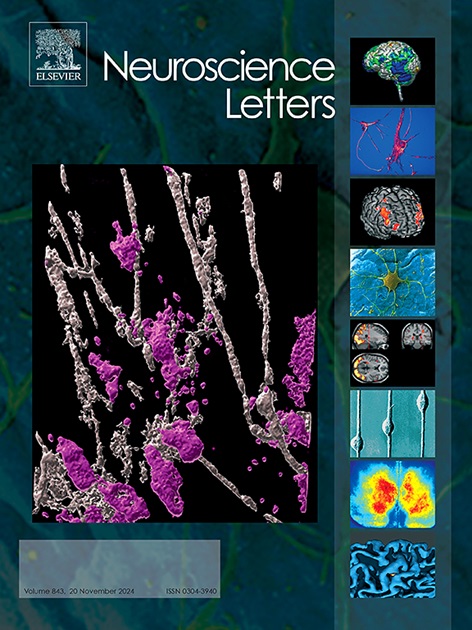心房利钠肽受体A的激活通过抑制IH抑制下丘脑PVN crferic神经元的兴奋性。
IF 2
4区 医学
Q3 NEUROSCIENCES
引用次数: 0
摘要
心房利钠肽(ANP)及其受体大量分布于下丘脑室旁核(PVN),参与调节脑内促肾上腺皮质激素释放因子(CRF)的释放。然而,ANP调节PVN crferic神经元活性的机制尚不清楚。在此,我们采用全细胞膜片钳记录、单细胞RT-PCR、免疫荧光和药理学方法研究了ANP在体外调节小鼠PVN CRF-mRNA表达相关的神经元活性的机制。我们的数据表明,ANP显著降低了表达CRF-mRNA的PVN神经元的膜兴奋性。这种作用被ANP受体A (NPR - A)拮抗剂A71915所消除。此外,ANP显著抑制表达CRF-mRNA的神经元的超极化激活阳离子电流(Ih)。阻断Ih或NPR - A完全阻止了这种抑制作用。免疫组化结果显示PVN crf阳性神经元存在NPR - A免疫反应性。这些结果表明,ANP通过NPR - A介导的Ih通道活性抑制,降低了小鼠PVN crferic神经元的兴奋性。本文章由计算机程序翻译,如有差异,请以英文原文为准。
Activation of atrial natriuretic peptide receptor A depresses hypothalamic PVN CRFergic neuronal excitability by inhibiting IH in vitro in mice
Atrial natriuretic peptide (ANP) and its receptor are abundantly distributed in hypothalamic paraventricular nucleus (PVN), and contribute to regulation of corticotropin releasing factor (CRF) release in the brain. However, the mechanism by which ANP regulates the activity of PVN CRFergic neurons remains unclear. Here, we investigated the mechanism by which ANP modulates the neuronal activity related to PVN CRF-mRNA expression in vitro in mice using whole-cell patch-clamp recording, single-cell RT-PCR, immunofluorescence, and pharmacological methods. Our data demonstrated that ANP significantly reduced the membrane excitability of PVN neurons expressing CRF-mRNA. This effect was abolished by an antagonist of ANP receptor A (NPR − A), namely A71915. Furthermore, ANP significantly suppressed the hyperpolarization − activated cationic currents (Ih) of neurons expressing CRF-mRNA. Blockade of either Ih or NPR − A completely prevented this inhibitory effect. Immunohistochemistry results indicated that NPR − A immunoreactivity was present in PVN CRF-positive neurons. These findings suggest that ANP decreases the excitability of PVN CRFergic neurons via NPR − A − mediated inhibition of Ih channel activity in vitro in mice.
求助全文
通过发布文献求助,成功后即可免费获取论文全文。
去求助
来源期刊

Neuroscience Letters
医学-神经科学
CiteScore
5.20
自引率
0.00%
发文量
408
审稿时长
50 days
期刊介绍:
Neuroscience Letters is devoted to the rapid publication of short, high-quality papers of interest to the broad community of neuroscientists. Only papers which will make a significant addition to the literature in the field will be published. Papers in all areas of neuroscience - molecular, cellular, developmental, systems, behavioral and cognitive, as well as computational - will be considered for publication. Submission of laboratory investigations that shed light on disease mechanisms is encouraged. Special Issues, edited by Guest Editors to cover new and rapidly-moving areas, will include invited mini-reviews. Occasional mini-reviews in especially timely areas will be considered for publication, without invitation, outside of Special Issues; these un-solicited mini-reviews can be submitted without invitation but must be of very high quality. Clinical studies will also be published if they provide new information about organization or actions of the nervous system, or provide new insights into the neurobiology of disease. NSL does not publish case reports.
 求助内容:
求助内容: 应助结果提醒方式:
应助结果提醒方式:


